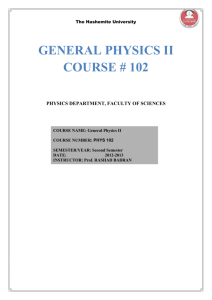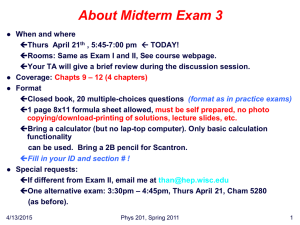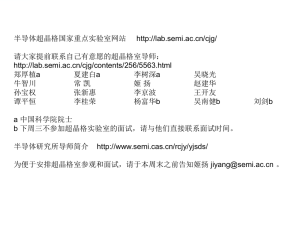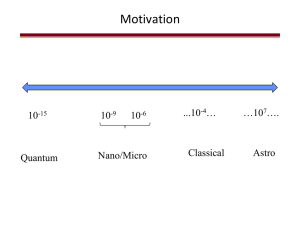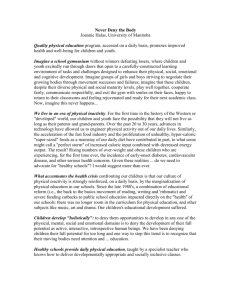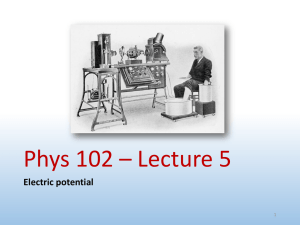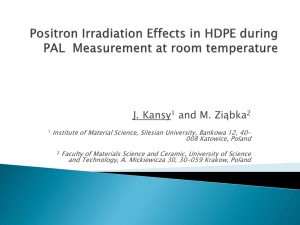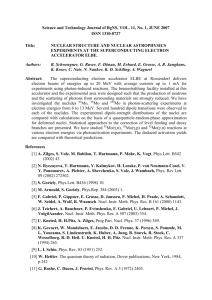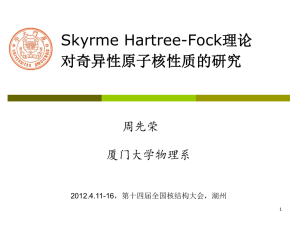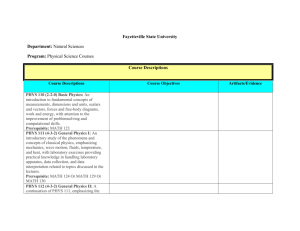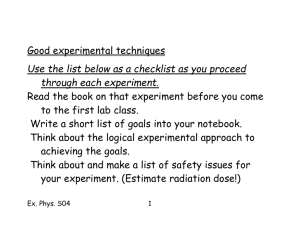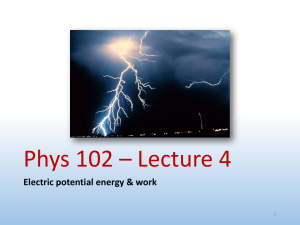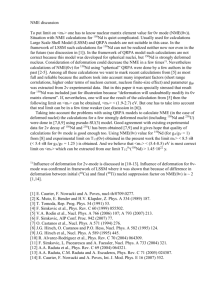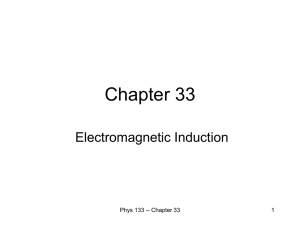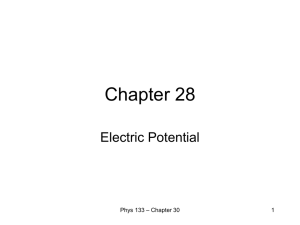Lect25
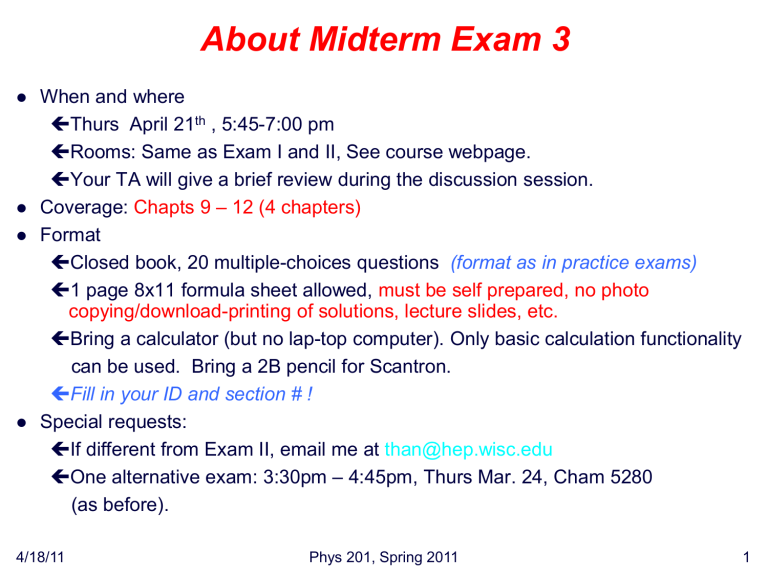
About Midterm Exam 3
When and where
Thurs April 21 th , 5:45-7:00 pm
Rooms: Same as Exam I and II, See course webpage.
Your TA will give a brief review during the discussion session.
Coverage: Chapts 9 – 12 (4 chapters)
Format
Closed book, 20 multiple-choices questions (format as in practice exams)
1 page 8x11 formula sheet allowed, must be self prepared, no photo copying/download-printing of solutions, lecture slides, etc.
Bring a calculator (but no lap-top computer). Only basic calculation functionality can be used. Bring a 2B pencil for Scantron.
Fill in your ID and section # !
Special requests:
If different from Exam II, email me at than@hep.wisc.edu
One alternative exam: 3:30pm – 4:45pm, Thurs Mar. 24, Cham 5280
(as before).
4/18/11 Phys 201, Spring 2011 1
Chapter 13: Fluids
Lecture 25
Density
Pressure in fluids
Variation of pressure with depth in a fluid
Buoyancy and Archimedes’ principle
4/18/11 Phys 201, Spring 2011 2
Has a definite volume
No definite shape
Exist at a higher temperature than solids
The molecules “wander” through the liquid in a random fashion
The intermolecular forces are not strong enough to keep the molecules in a fixed position
Liquid
4/18/11 Phys 201, Spring 2011 3
Gas
Has no definite volume
Has no definite shape
Molecules are in constant random motion
The molecules exert only weak forces on each other
Average distance between molecules is large compared to the size of the molecules
4/18/11 Phys 201, Spring 2011 4
Density
4/18/11
Density = Mass/Volume
ρ = M / V
units = kg/m 3
Phys 201, Spring 2011 5
Pressure = Force per Unit Area
Which will hurt more?
If you are pricked by a nail with a force equal to your weight
If your entire weight is supported by a bed of similar nails
Both will hurt the same
4/18/11 Phys 201, Spring 2011 6
Pressure in a fluid or gas
• Impulse to book:
(or raindrops on your umbrella) v
• Force is perpendicular to surface
Air molecule
• Force proportional to area of surface v
• pressure (p) p = Force/area [N/m 2 ]
1 N/m 2 = 1 Pascal (Pa)
F x book
4/18/11 Phys 201, Spring 2011 7
4/18/11
Atmospheric
Pressure
Even when there is no breeze, air molecules are continuously bombarding everything around - results in pressure.
Normal atmospheric pressure = 1.01 x 10 5 Pa
Phys 201, Spring 2011 8
Pressure and Depth
Examine the darker region, assumed to be a fluid ρ
It has a cross-sectional area A
Extends to a depth h below the surface
Three external forces act on the region
-P
1
A + P
2
A - Mg = 0
P
2
= P
1
+ Mg/A = P
1
+ Mgh/V = P
1
+ ρgh
At the surface compared to at depth h
P o is normal atmospheric pressure
1.013 x 10 5 Pa = 14.7 lb/in 2
4/18/11
P is the “absolute pressure”;
P - P o is the “gauge pressure”
Phys 201, Spring 2011 9
Barometer: Measure atmospheric pressure
p
2
= p p atm
1
+ ρ
= ρ gh gh
Measure h, determine p atm example--Mercury
ρ = 13,600 kg/m 3 p atm
= 1.05 x 10 5 Pa
ρ h = 0.757 m = 757 mm (for 1 atm) p
1
=0 p
2
=p atm h
4/18/11 Phys 201, Spring 2011 10
Question:
Is it possible to stand on the roof of a five story (50 foot) tall house and drink, using a straw, from a glass on the ground?
1. No CORRECT
2. Yes
P=0
P a h
Evacuate the straw by sucking
How high will water rise?
no more than h = P a
8”
/ ρ g (= 1.05 x 10 5 /1000/9.8) = 33 ft no matter how hard you suck!
the glass is not enough to push all of the liquid up the
50ft through the straw.
Phys 201, Spring 2011 11 4/18/11
Measurement of Pressure
Manometer
If both sides of an U-tube are open to atmosphere the levels of the fluid are the same on both sides
If one side is connected to a “pressurized side” the level difference between the two sides can be used to measure pressure.
4/18/11 Phys 201, Spring 2011 12
Measuring Blood Pressure
Blood pressure is quite high, 120/80 mm of Hg
Use higher density fluid in a manometer: Mercury
4/18/11 Phys 201, Spring 2011 13
F
1
Pascal’s Principle
A
A
1
1
F
2
A
2
The pressure applied to an enclosed fluid is transmitted undiminished to all portions of the fluid and to the walls of its container.
This principle is used in hydraulic system
P
1
= P
2
(F
1
/ A
1
) = (F
2
/ A
2
)
Can be used to derive large gain by making A
2 much larger than A
1
» F
2
= F
1
(A
2
/ A
1
)
» Work done is the same: height by which the surface A
2 rises is smaller than the change in the height of surface with area A
1
.
4/18/11 Phys 201, Spring 2011 15
Buoyancy and Archimedes’ Principle
4/18/11
B = ρ f
V g
Phys 201, Spring 2011 16
King Hiero II of Syracuse’s Crown
King Hiero II asked Archimedes to check if his crown was pure gold.
Archimedes knew
ρ gold
= 19.3x10
3 kg/m 3 , ρ w
= 1.00x10
3 kg/m 3 weighed:
W c
W’ c
= F g
= F’ g
= 7.84 N in air
= 6.86 N in water
Archimedes’ principle:
B = W c
W’ c
= 0.98 N = F w
= V ρ w g
V g = 0.98 N/
ρ w
Thus, the crown density:
ρ c
= M/V = W c
/ V g = (7.84 N /0.98 N)
ρ w
= 8 kg/m 3 < ρ gold
King Hiero II was cheated !
4/18/11 Phys 201, Spring 2011 17

